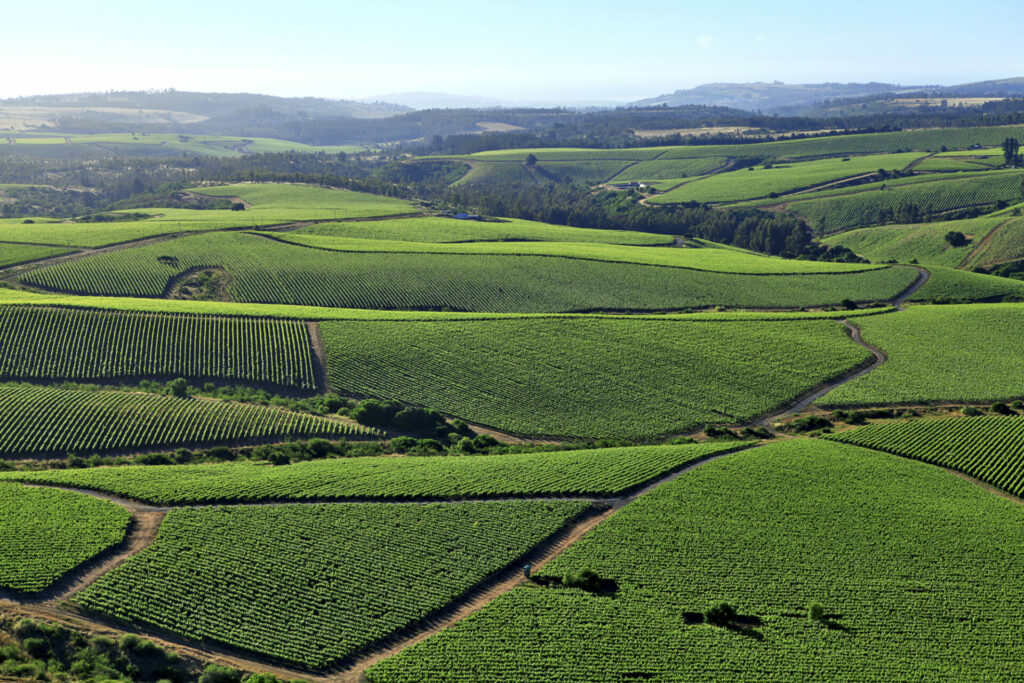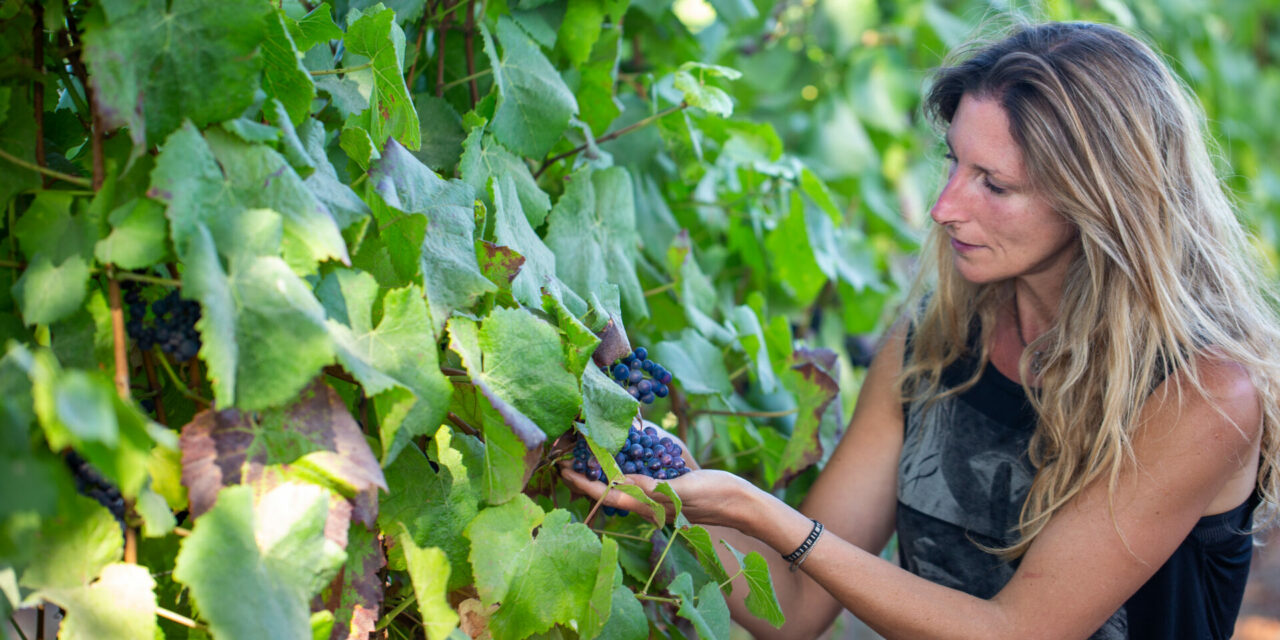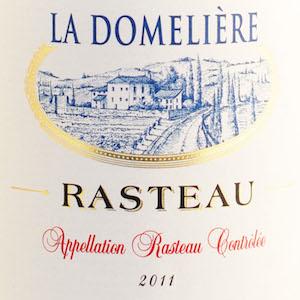Given its microclimate propensity, Chile is a wine country that has sparked many climatic debates.
Spanning 4,000 km, from north to south, you undoubtedly have inlets and valleys that cause a pause in the notion that Chile is a purely warm climate, and ripe for big reds like Cabernet Sauvignon and Carménère only. In fact, along Chile’s coastline, several vineyards benefit from the cooling impact of the Pacific Ocean. It is not uncommon to see these areas with ‘degree days’ that classify them as cool climates, if going by the Winkler Index. Such is the case with Leyda Valley, a relatively new DO in Chile and a smaller sub-area of the Aconcagua Region.
Viña Leyda, Pioneering Wines in Leyda Valley
Leyda Valley was born out of one producer’s adamant charge that their area under vine should have its own demarcated Denominación de Origen. That producer was none other than Leyda Wines.
In some cases, their vines are just 4 km from the Pacific Ocean, blossoming from morning fog, exceptionally cooler climate than the rest of the Aconcagua, and soil types of differing characteristics. These distinctions give you contrasting expressions of ‘like’ grapes in the glass. So, with proof through production, the Leyda Valley DO was deemed official in 2002, given its unique character.
The DO is relatively small, 40,000 hectares, and Leyda vineyards comprise 163 hectares. The brand touts its vibrancy partly due to its cool climate, a statement that is still often met with a raised eyebrow. It’s Chile, after all. A country on the 30th parallel South. But regions like Leyda make you rethink that one-brush mentality.
I connected with Viviana Navarrete, Chief Winemaker at Leyda, to taste a few wines from their portfolio and talk about Chile’s ‘cool climate’ nuances.
“Normally, people think of Chile as a warm climate area, but there’s much more,” Viviana explained. “We have an average temperature of 13°C; you can compare that to Burgundy, and our degree days are 1,172. So, it’s actually a cool climate, and it’s super to make cool climate wines.”
The Winkler Index classifies anything below 1,370 degree days as a cool climate. You will find regions such as Chablis and the Mosel in this classification, meaning that these two renowned cool climate wine regions fall into the same ‘degree days’ category as Leyda Valley in Chile. Think about that. If you’ve ever doubted the impact of the Humboldt Current on Chile’s coastline, you can doubt no more.
However, with climate benefits comes the effort of varied topography for Leyda Wines. Much of their vineyard site is a tapestry of hills and slopes that only the learned should tackle. Knowing this, I asked Viviana how the landscape affected vineyard management. She explained that because of the vineyard’s vast topography, parcels of land within the vineyards had to be treated individually, and that meant planting vines in various directions to get the best-cultivated berry possible. Viviana fondly referred to the vineyard’s guise as “patchwork”.

When you look at the Leyda portfolio, you’ll see three lines of wine; the Reserva, the Coastal Vineyards, and the LOT. Each segment is assigned as such to allow for a purity of wine that gives the customer insight into the winemaking process and a first-hand experience of the land. The wines are assigned placement based on soil, aspect ratio, and location relevance.
You will often find that the wines in the LOT series not only come from a parcel of land in the vineyards (a ‘lot’), but also a parcel within a parcel. That’s how exacting the winemaking at Leyda Wines is.
“I am very picky when it comes to the philosophy of working. I like to separate and study the land. That’s the only way you can understand and learn,” says Viviana.
After our discussion on Leyda topography, Viviana and I shared some funny anecdotes about harvest time that led me to think that the next evolution of this article should be an interview with Viviana and her Viticulturist.
Leyda Wine Tasting
We tasted six wines in the Leyda portfolio, three whites, and three reds. Each gave us insight into the Leyda Valley terroir and Viviana’s winemaking philosophy.
“For the Reserva level, we pick grapes from the two vineyards and blend. For the Coastal Vineyards and LOT, we split everything and separated everything. And you know, I think this is the only way you can understand and learn. My mission is to improve the quality year over year, and this is the only way you can do that,” says Viviana.
2022 Leyda Valley Reserva Sauvignon Blanc – $16.95
This wine was a great example of shouting where it’s from and its variety. It has herbed green notes typical to Chile but the acidity of a cool climate effect with crunchy salinity. Think jolly rancher, with a nutty long finish. Undoubtedly, a great food wine.
![]()
2021 Leyda Valley Coastal Vineyards Garuma Sauvignon Blanc – $17.95
More defined than the Reserva above, this wine gives great fruit notes on the nose in front of the typical grassy aromas expected. On the palate, you recognize that this is Sauvignon Blanc with its lime, grapefruit, and fresh-cut grass nature.
![]()
2021 Leyda Valley Lot 4 Sauvignon Blanc – $29.95
If ever you wanted to see what cool climate regions in Chile could produce when it comes to Sauvignon Blanc, you want to taste Lot 4. This wine is fermented in stainless steel, concrete egg, and 20% used oak. Its slightly oxidative notes add to this wine’s complexity.
Lot 4 comes from one parcel of land amongst the vineyard. Given this, the expression is very focused, and only a few cases are made.
Viviana Navarette’s wines are known as what to strive for when it comes to Pinot Noir in Chile, and after trying Lot 4, the same could be said of Sauvignon Blanc.
![]()
2022 Leyda Valley Reserva Pinot Noir – $16.95
There was no mistaking that this was Pinot Noir. It is a classic expression that checks all of the testable profile boxes. Bright red fruit, hibiscus, spice, and medium+ acidity. By far, a fun and easy-drinking wine.
![]()
2022 Leyda Valley Coastal Vineyards Las Brisas Pinot Noir – $19.95
The grapes for this wine come from parcels of land that face west, directly benefiting from the cooling influence of the Pacific Ocean and the reflection of sunlight one gets when close to a body of water and on a slope.
On the Coastal Vineyards Pinot Noir, you get that red-fruited profile one would expect, but it also comes with non-fruit notes of violet, mushroom, and white pepper. Moreover, its whole cluster fermentation adds another layer to this wine as black tea, and a slightly candied fruit nature is evident mid-palate.
![]()
2020 Leyda Valley Lot 8 Syrah – $39.95
Blackberry, pepper, and cured meat!
Only 10% was aged in new Bordeaux barrels, while the remaining was aged in large foudres. The wine is well structured, with moderate alcohol (13.5%), medium + acidity, and sturdy tannins.
Viviana explained that this wine has gone through several iterations to where it is now, a great expression of cool climate Syrah that defies the notions that most have of Chilean red wine.
![]()
(All wines are rated out of a possible five apples)
Bottle Bias
After tasting so many great wines from Leyda, I had to ask Viviana the utmost controversial question; which of her children (wines) held a special place in her heart?
“I have two babies,” Viviana says. “One of them is the Lot 4 Sauvignon Blanc. I am super passionate about Sauvignon Blanc.” Viviana further explains that her love for Sauvignon Blanc comes from its elegance and ability to show a sense of place, especially climate.
“My other baby is Lot 21 Pinot Noir.” Viviana continues, “She is the kid that is challenging. The grey hair that I have is because of her. But I love it because when you have more challenges, you are more devoted to it.”
Viviana has been making wines at Viña Leyda since 2007 and is as energetic today as when she started.
Through talking and tasting with Viviana, it was clear that she is pioneering Pinot Noir and Sauvignon Blanc in Chile and giving the world a newfound recognition for Chilean wines by showing the many faces of this land in a bottle.
“My mission is to improve the quality year over year and to make the best cool climate Pinot Noir from the new world.” Viviana Navarrete







